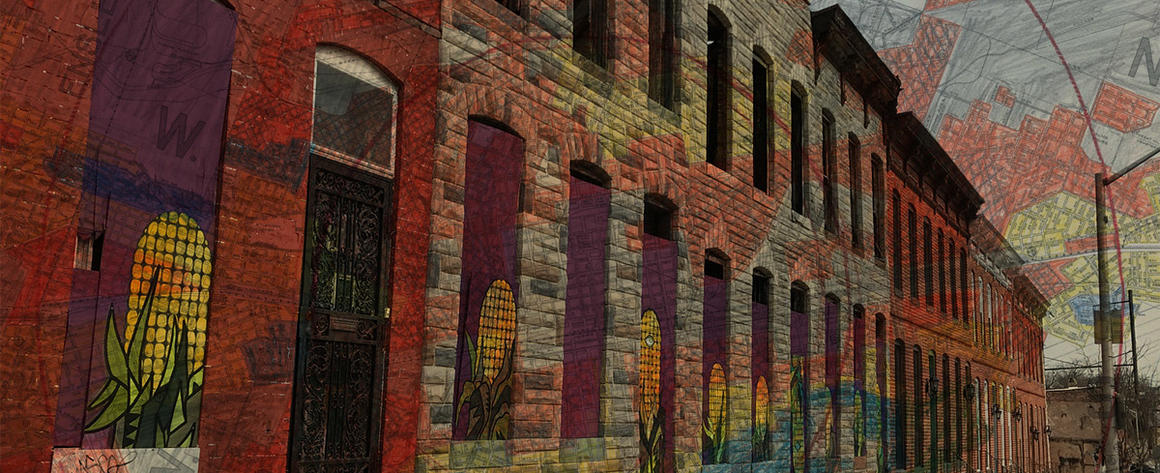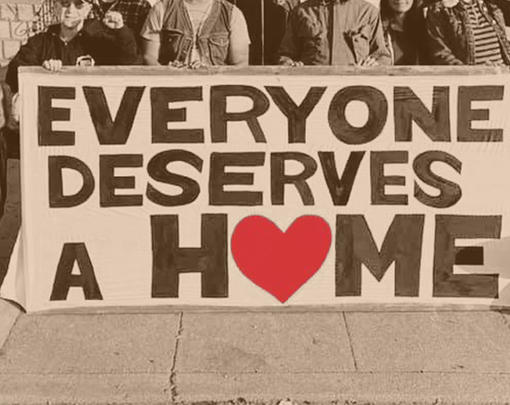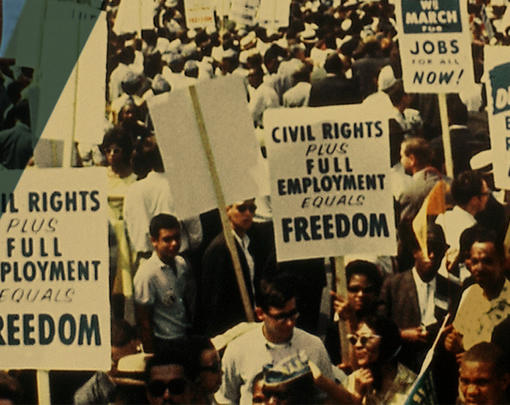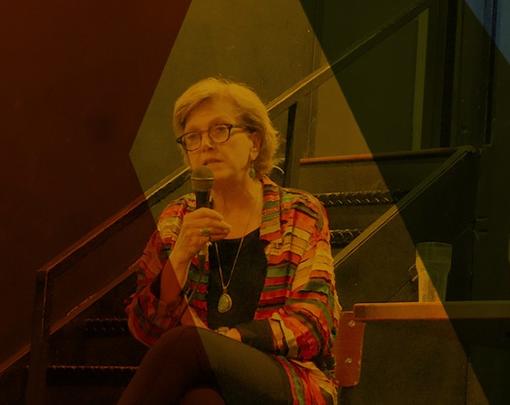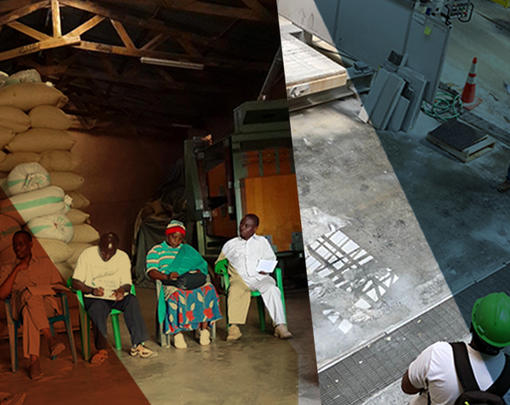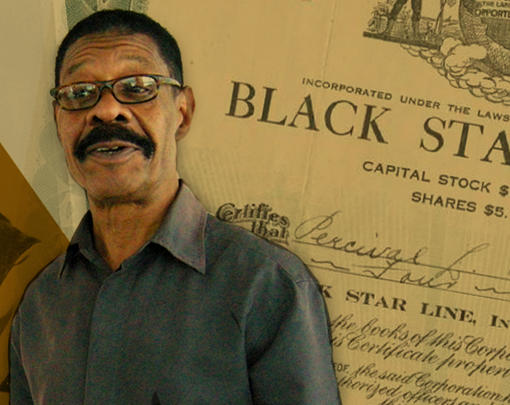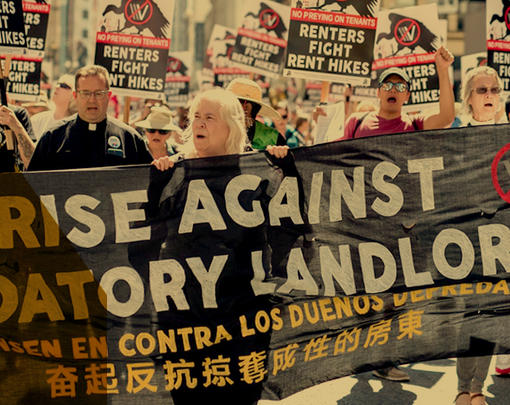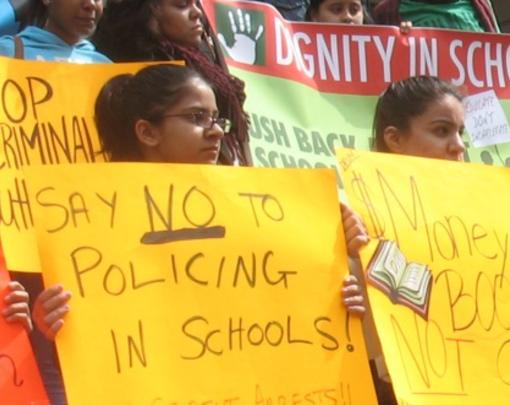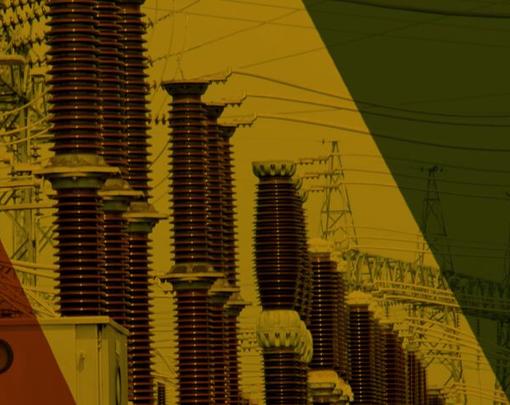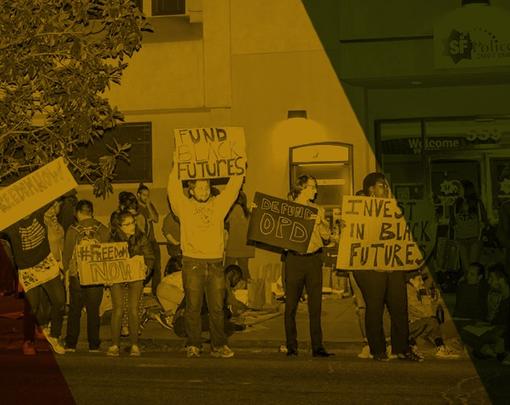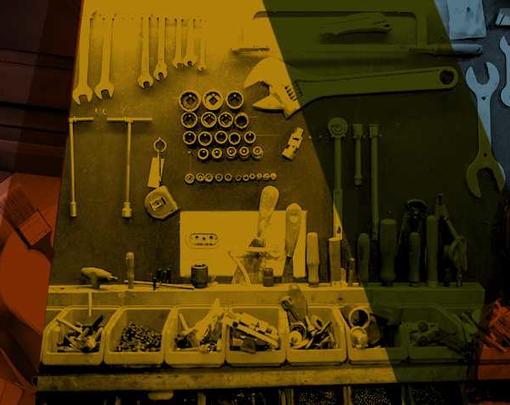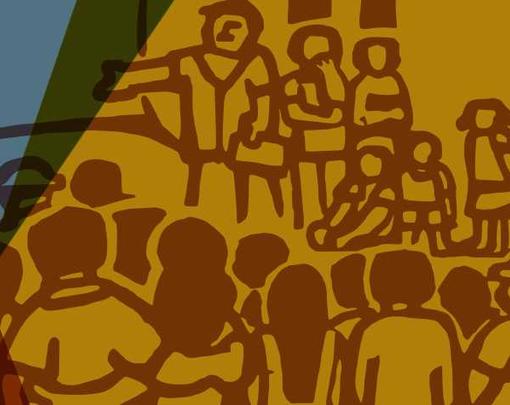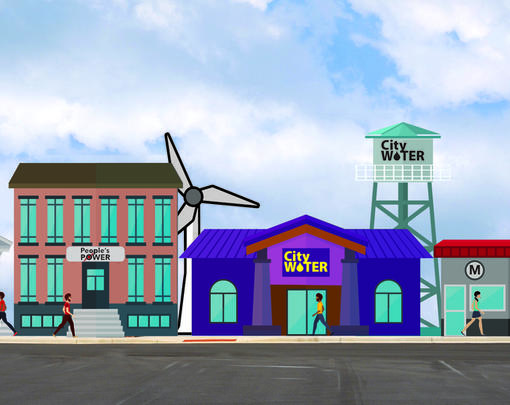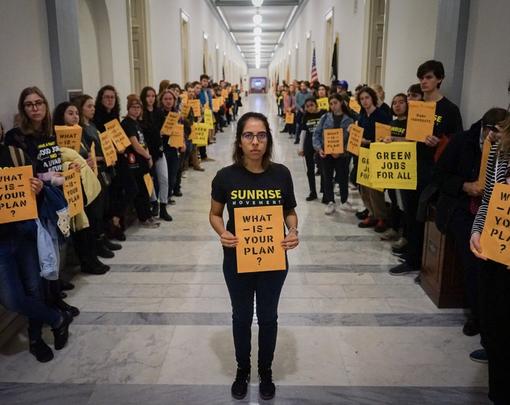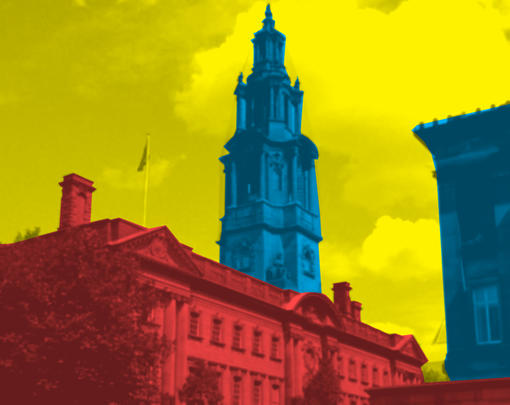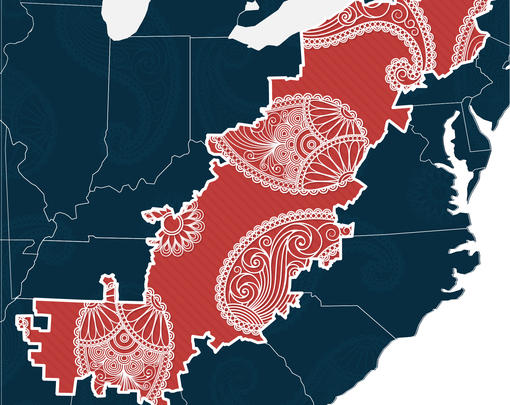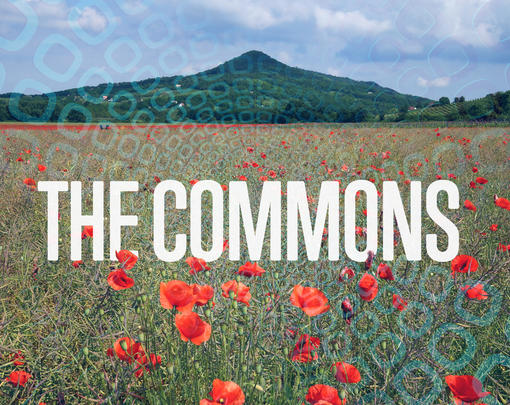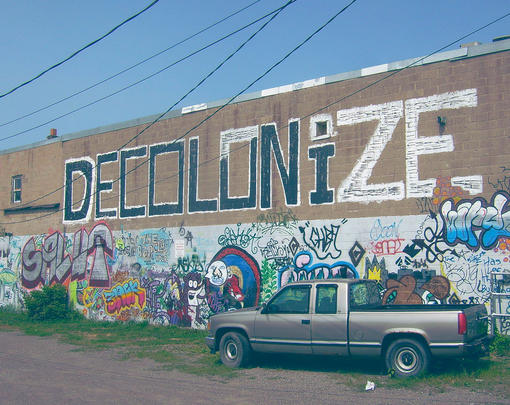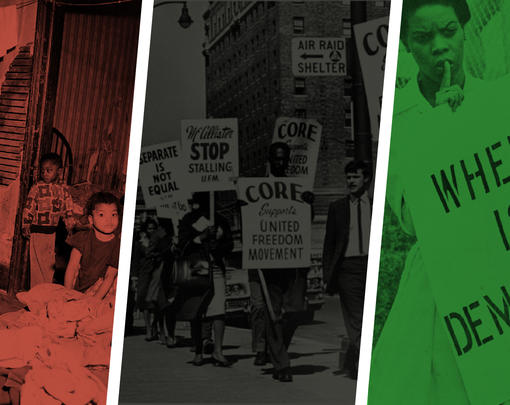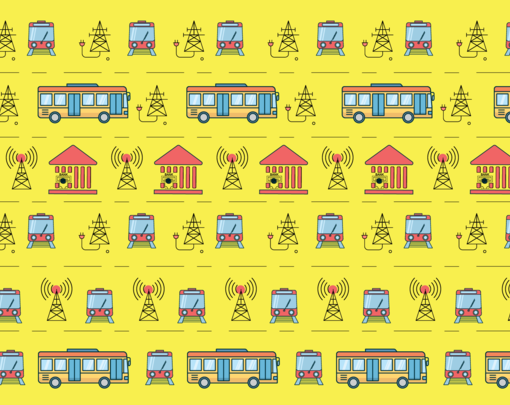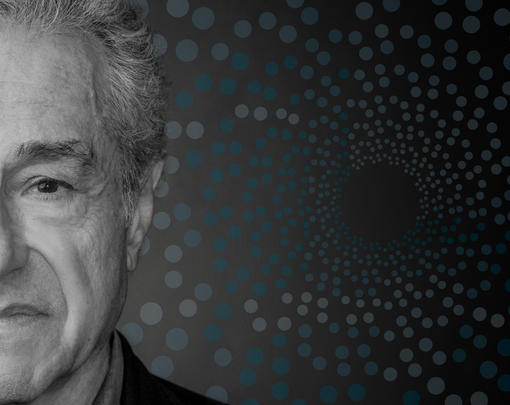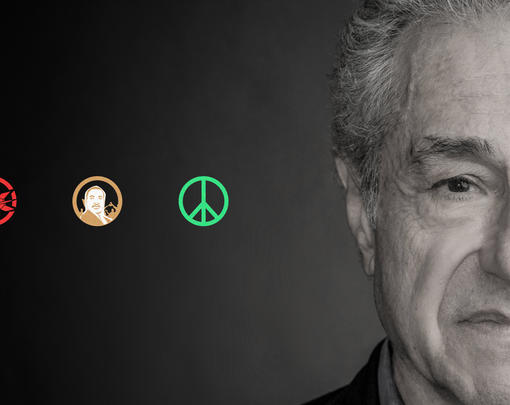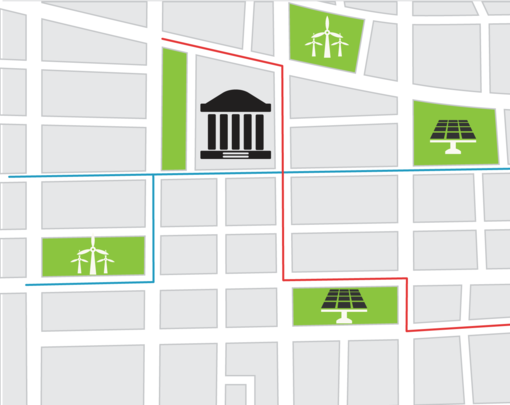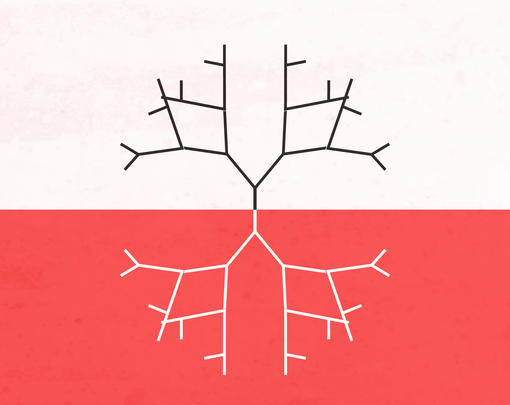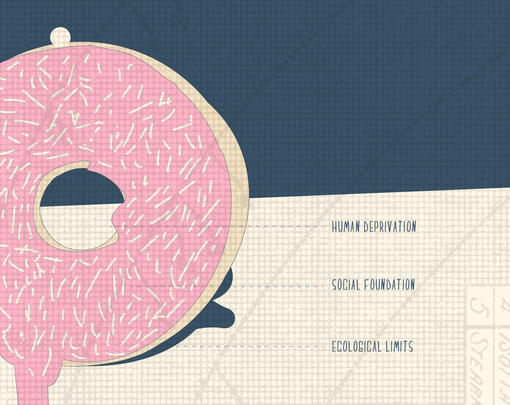Editorial Manager Isaiah J. Poole hosts Next System Project fellow Devin Case-Ruchala in a discussion about the future and yet-to-be-fulfilled potential of a landmark community investment law with John Holdsclaw, senior vice president of corporate affairs at National Cooperative Bank, and Gregory Jost, director of organizing at the Banana Kelly Community Improvement Association in New York City and a leading expert in community development issues.
The Next System Podcast is available on iTunes, Soundcloud, Google Play, and Stitcher Radio. You can also subscribe independently to our RSS feed here.
Isaiah J. Poole: And welcome to the Next System Podcast. I am Isaiah J. Poole, filling in for Adam Simpson. This episode, we’re talking about the Community Reinvestment Act. It’s a law since the late 1970s that’s compelled banks to publicly account for the investments that they make in the low- and moderate-income communities in which they operate. That law today is at a crossroads, between conservatives and financial industry leaders who want to weaken the law, and communities who say the public should be demanding more of the banking sector, not less.
We have a great group of people to talk about what do banks owe our communities, and what is the best way to hold the financial sector accountable for what they should be doing for our communities. With us today is Devin Case-Ruchala. Devin is a graduate student at the University of North Carolina at Chapel Hill who is pursuing a doctorate in the political economy of finance. Devin has an extensive background in the cooperative sector, and Devin prefers the pronouns they, them and their. Devin has written a new working paper and resource guide that is currently on the homepage of our website, thenextsystem.org. It’s called “A next system of community investment: Community Reinvestment Act reform in the 21st century.” Devin, thank you for joining us.
Devin Case-Ruchala: Thanks so much for having me.
Isaiah J. Poole: Also with us is John Holdsclaw from the National Cooperative Bank, where he is senior vice president of corporate affairs. Part of his job there is to promote and advance social investment opportunities in ways that further the National Cooperative Bank’s commitment to mission banking. John, I’m really glad to have you with us.
John Holdsclaw: Thank you for having me.
Isaiah J. Poole: And finally, we have Gregory Jost. He is a man with many hats. One of those hats is director of organizing at Banana Kelly Community Improvement Association in the South Bronx. He is also a partner at designing the WE, which is a social impact design studio collaborating with community groups to undesign structural racism and systemic equality. Thank you for joining us, Gregory.
Gregory Jost: It’s good to be here.
Isaiah J. Poole: Let me start with Devin and this working paper that you’ve written. What is the significance of the Community Reinvestment Act, and why do you think it’s important to have a conversation about this law at this particular time?
Devin Case-Ruchala: The CRA was a law that was passed in 1977 to address the issue of redlining, and it’s been a hugely important law in terms of getting banks to lend more equitably. The law originally said that a bank that takes deposits in a lower income area can’t just take that money and invest it only in a higher income area. Rather, it needs to make an effort to lend equitably in the communities in which they operate.
At the time that the law was passed, the main mechanism by which the CRA requirements were activated was through the actual bank branches. Now of course, banks are no longer significantly branch-based. Rather, the financial industry as a whole has moved away from simple deposit-taking, especially through branches, and then lending out in long-term, sustainable investments. So the importance of thinking about the CRA right now at this time is to understand to what extent is it able to really do what it was intended to do given structural and ideological changes in the banking industry that have more aligned banks structurally and ideologically with capital markets or the shadow banking industry, and moved their focus away from communities.
Now, despite that the banking industry has moved away from a branch-based, community-based focus, bank deposits still constitute $12 trillion in assets. That is a huge, huge amount of wealth that could be going towards communities, and in their various avenues through which communities are able to do that. So in a nutshell, CRA, especially now the OCC has come out with an advance notice of proposed rulemaking…
Isaiah J. Poole: The OCC is the Office of the Comptroller of the Currency, which is in the Treasury Department.
Devin Case-Ruchala: Thank you, yes. So there’s an opportunity right now for regulatory changes, and there’s been proposed legislation by Senator Elizabeth Warren to modernize the CRA, so it’s important to understand the CRA, what it’s doing right now in the banking industry, and how it can modernize it.
Isaiah J. Poole: We’ll get to those a little bit later in the podcast. Gregory, I want to talk to you, because you’ve been on the front lines of economic development there in the South Bronx. What’s your perspective on what the Community Reinvestment Act has done, what differences it has made, and what difference it has not made?
Gregory Jost: Great question. When CRA was passed, it was an era of mass disinvestment, both by the private sector and the public sector. You had bank redlining, insurance redlining, and you had policies of planned shrinkage that were really piloted in New York City in the South Bronx, where they closed fire stations in the exact neighborhoods where there was an increase in the number of fires. Folks were fighting back, because their neighborhoods were literally burning down, and their actual first real battle was for what they called home mortgage disclosure. That was the rallying cry starting out of Chicago, and they passed a mortgage disclosure bill in the state of Illinois, and then they fought for it on a national level. It was part of these coalitions that were in places like the Bronx, in Baltimore, Cleveland, Syracuse, a lot of working class, mixed-race neighborhoods that would be redlined because there was this racial change happening. That’s a lot of the origins of redlining out of that idea that we can’t have working class, mixed-race neighborhoods, because they’re too risky.
After they got whole mortgage disclosure passed in ‘75, there was an era of, “What do we do next with this?” A lot of the folks on the ground really thought that they could just push banks on their own, but after CRA was passed—which really came out of more of a vision of some folks in the Senate, Senator William Proxmire and others—it provided this really great tool to actually hold banks accountable for doing what they should’ve been doing all along.
In the early years, the challenge was how do we get CRA to work for our neighborhoods? This was the point in time where folks were taking over their buildings either through sweat equity or through passing the hat and saying, “We’re gonna turn this into a community-controlled piece of housing.” We had groups all over the Bronx, all over the city, all over the country, looking for investment to be able to rehab these buildings and homes. These are buildings that didn’t have boilers, or they had been stripped in different ways, because the landlords were stripping whatever they could out of them. So they used and leveraged CRA as much as they could to be able to bring some investment back into their neighborhoods.
It started very slowly, but there was some big key moments. There was one story in the ’80s where Citibank was actually closing a branch on West Kingsbridge road, and they had sent out this get moving kit to all their customers, which included folks who were organizing in the northwest Bronx at the time, and it was saying, “We’re moving to Westchester. You should too. Come stop in for a home loan for buying a house in the suburbs.” Meanwhile, they were trying to close their branch, so folks were organizing and they were saying, “We’re gonna try to stop it.” They actually did. They were able to stop the expansion of Citibank into the credit card business for about a year because of this branch closing. So that was one of these really interesting stories of how they could leverage the power of this law. In the end, it was a loss because that branch still closed, but they were able to keep another branch open a few blocks away that’s still there today. So there’s some losses, some victories in there. But the big picture of it is that CRA’s allowed community organizations the access to capital to do these acquisition, renovations, reconstruction of housing and rebuild physical infrastructure in neighborhoods that were decimated.
Over time, it’s become known to the banking industry that a lot of this lending can be very profitable, and a lot of the work that they can do, it looks good, and it feels good, and again, like I said, it’s rebuilt neighborhoods.
Isaiah J. Poole: But what is not happening?
Gregory Jost: That’s the critical piece here. There is a certain type of investment that comes in through CRA, but it misses a lot, because it’s built on this existing structure that it never really addressed in terms of the underlying systemic inequality that was there, and the systemic racism. So as the neighborhoods become rebuilt and more desirable, we see this pattern that’s happened for many generations of serial displacement continuing. So the investment that comes in fails to invest in folks on the ground who actually live in the neighborhood. It doesn’t build wealth or ownership for folks in any kind of intentional way. So as the neighborhood improves, you see that instead of the rising tide lifting all boats, you see the flood waters coming in and washing away folks who have been the historically redlined people.
So we still have folks who have very low to negative wealth who don’t own anything, who struggle to make their rent payments or mortgage payments, who spent over 50, 60 percent of their income on rent. We have a lot of folks who have been displaced multiple times who’ve been pushed from one neighborhood to the next to the next, and end up in a place like the Bronx because it’s the last option in New York City before you get bumped all the way out of the city. And we still have all these other massive disparities in terms of everything from health disparities to education disparities to incarceration disparities. It hasn’t addressed any of that, and that might be asking a lot out of it. It wasn’t really designed to address all those things, but we know in the context in which it arises, if we think about it as an anti-redlining law, the potential for it is so much greater than what’s there right now.
Isaiah J. Poole: So let me go to John, because you actually have the National Cooperative Bank that you are a part of. How is your work affected by the Community Reinvestment Act, and what shortcomings do you see?
John Holdsclaw: Fom a historical standpoint, CRA was created and signed into law in 1977. The National Cooperative Bank was congressionally chartered in 1978, and one of the things as a part of that charter and what a lot of people don’t know is that the bank has a mandate that 35 percent of all of our disbursements be in low- and moderate-income communities. So the idea of us wanting to work in those communities is already baked into the cake to some degree. So as years have gone on, this mission has really become a large part of the DNA of the organization. So CRA, while it’s very valuable to us, it doesn’t deter us or encourage us to do what we’ve been mandated to do.
With that said, we try to use CRA in other opportunities to work in LMI communities to advance the rise of cooperative development. We’re starting to see more now in some of our lending in the co-op grocery world where we’re seeing a growth in both the urban and the rural areas. You probably will hear the word “access” throughout this entire podcast. Giving folks access to healthy foods who don’t necessarily have them in these communities, and this goes along the spectrum of predominantly white communities, predominantly African-American communities, as well as on the home ownership side. We just actually recently finished a transaction that is going to allow there to be not necessarily larger share loans but smaller share loans, the loans that are used to finance housing cooperatives. For many years, government restrictions on resales and other things have made it hard for low-income families to own cooperative housing or be part of cooperative housing. So it has limited the amount of limited equity co-ops around the country. We’re hoping that by providing these smaller share loans to increase the number of limited equity co-ops in New York and Chicago and other places across the country.
Lastly, we’re starting to see a need for there to be more education around cooperatives. I spent many of my years walking the halls of Congress; I always tell people that I’m a reformed political junkie. But you would talk to staffers about cooperatives, and they would have no idea what you’re talking about. Then you say, “Are you a member of the congressional credit union, or the senatorial federal credit union?” “Well, yes I am, I’m a proud member.” And you’d let them know, well, that’s a cooperative. You’re joining as a member, not necessarily as a client or a person with an account there. Then the light goes off. So what it’s done for us is just create an opportunity for us to continue doing the mission lending that we’ve done since our inception, but also to educate those around the cooperative principles and development that we see, so very important to combat, what Gregory was saying, the structural inequalities in some of these communities, and many of these communities that we serve.
Isaiah J. Poole: Devin, one of the things that you really emphasized in this working paper was the notion of community wealth building as a missing element in what the Community Reinvestment Act does. Explain what you mean.
Devin Case-Ruchala: The original law really didn’t have much guidance on how banks were supposed to be examined. That came in a 1995 reform, which implemented the bank exams, which evaluate banks on their activities, and lending and investing, and providing certain services to low- and moderate-income communities. As part of that, there’s a whole set of criteria that is outlined in what’s called the “interagency Q&As.” I don’t know why it’s called that, but that’s where you go to find the qualifying criteria, and what’s specified there is a focus on mortgage lending to individual or moderate-income borrowers and small business lending to low- and moderate-income borrowers, which is loans under $1 million.
Then there’s an expansion of that definition, but that’s kind of the basic definition. What I heard through talking with some people that have worked with the CRA, and I’d be interested to hear what else Gregory has to add to this, is that there are limits to how far that impact can go and the types of projects that end up going into communities and maybe aren’t necessarily building lasting community wealth. So the focus on community wealth building, which is to say that there’s an opportunity to build on these criteria to really specifically call out the role of certain types of community development models, like the community wealth building models, co-ops, land trusts, and social enterprise—call those out explicitly in the criteria to say these are wealth building models that are even more effective, or can be more effective at building lasting wealth in communities.
Isaiah J. Poole: Otherwise what we’re doing is encouraging banks to put money into communities in ways that end up pushing people out of communities.
Devin Case-Ruchala: Sure. There are criteria that specify mixed-income housing to try to mitigate the gentrification that can happen as certain types of housing projects come into low-income communities. But the extent to which the criteria, the higher impact projects are actually emphasized is a matter of the broader evaluation process, and so banks can kind of get away with doing less even though there are the higher impact projects on that list. And this gets into the reforms of why we need better enforcement mechanisms, which we’ll get to later, I’m sure.
Isaiah J. Poole: One statistic in your report stands out, which is something like, correct me if I’m wrong, 98 percent of banks get favorable Community Reinvestment Act ratings?
Devin Case-Ruchala: That’s correct. They get satisfactory rating or greater and outstanding rating. It’s like 89 percent get satisfactory, which only leaves about 10 percent that’s getting an outstanding rating.
Isaiah J. Poole: So let me ask Gregory there, do 89 percent or 98 percent of the banks that are operating in the South Bronx operate satisfactorily?
Gregory Jost: First, there’s not that many banks even operating in the South Bronx. That’s the first thing. So if you want to talk about branch distribution, no. And that’s only one small piece. The point Devin’s making, and it’s very true, it’s so easy to pass. You have to be really, really bad, and when I say you have to be really bad, you look at all the huge megabanks. They’re going to invest a ton of money here and there, but they’re also simultaneously extracting wealth out of our neighborhoods, out of our communities, and there are different things that they invest in in the whole world of global capitalism right now. That part doesn’t get considered hardly at all. I think even, and Devin, you probably can speak to this better, but even Wells Fargo, with some of the trouble they got in before, got what was like a slap on the wrist. You need to do this and change this, and then you’ll still get a really great rating. So the bar is set so low. Some of the only times that a bank actually gets a worse than satisfactory rating is if they’re specifically engaged in blatant racial discrimination, redlining, and they’re a small bank so they can’t make up for that in other ways. So yes, there’s very little to what’s actually being measured at this point in time that has much teeth to it.
Now we have been able to have some success. We have a state regulator in New York State, because there are a lot of New York State-chartered banks. It’s the Department of Financial Services. We ran a project a number of years ago that I helped lead where we created this data set to evaluate the physical and financial distress of basically every New York City apartment building. We did that through pulling data on code violations, that they owed taxes, and water and sewer, if there were structural issues in the building, and then we also pulled mortgage data. We were able to, from a systemic level, look at the quality of the loans that each bank is making. And then we go to the regulators, and we started with Department of Financial Services, and the Federal Deposit Insurance Corporation (FDIC) also came on board to a certain extent to start looking at in the CRA exams, and asked if we can stop counting loans made in these qualifying low- and moderate-income census tracts that are actually going to questionable types of actors, what you might call a slumlord. In fact, we got the governor of New York State to announce these as slumlord prevention guidelines.
That was the first step. Since then the Department of Financial Services has actually gone a step further and looks at whether or not the buildings that the banks are putting forth is asking for qualifying as CRA investment, is there displacement happening? Is this landlord coming in and pushing out low-rent tenants, lower-income tenants, to bring in higher-income, higher-rent-paying tenants? And if they can demonstrate that, basically what they’re doing is putting the onus on the bank to say that this is not happening.
Isaiah J. Poole: Right. But the key point of what you just said there is that you were able to do that because you had state elected officials who were willing to go to bat for that. If you happen to live in a state like Georgia, for example, say you’re living in Atlanta, you may not have that benefit.
Gregory Jost: No. And we obviously, there was a lot of organizing to push for that. There was the data and advocacy work, and there was on the ground organizing. It came out of the last housing bubble collapse, where we had buildings going into foreclosure. We had a couple buildings in the Bronx go vacant for the first time in decades. So there was a ton of organizing work that pushed for it, but yeah, you have to have the electeds that are willing to listen and put their money where their mouth is. But we believe that this set a precedent in saying that it is possible for regulators to go the extra mile and think about what’s the real intent around CRA. There’s not really a stick, there’s not a punishment to the banks for actually doing some of that harmful type of lending; they just don’t get to count those loans for their benefit. So while it’s something, we really feel like it can go further.
Isaiah J. Poole: So let’s talk to Devin, and let’s talk about what are the specific things that you’ve been raising up that would raise the bar.
Devin Case-Ruchala: There’s quite a range of options that are available. There are reforms that can be made within the current regulatory framework, and there are reforms that are arguably the more fundamental ones that we really want to shoot for but that are going to require legislative change; those are reforms that would expand the CRA to non-depository institutions; financial institutions that aren’t taking deposits.
Isaiah J. Poole: For example?
Devin Case-Ruchala: Online financial institutions or online banks, mortgage affiliates that are part of a bank holding company. There’s a problem that the types of activities that banks used to do are moving into the mortgage affiliates that are part of the same bank holding company that are not regulated by the CRA, so they’re able to do mortgage lending without being subject to the CRA.
Isaiah J. Poole: That would be the Quicken Loans of the world, right?
Devin Case-Ruchala: Sure, and there are efforts to put pressure on regulatory agencies to look at that more closely, but an explicit expansion into those institutions will require legislative change.
Within the current regulatory framework, there are changes to the community development criteria. What it requires with loans, investments, and services that qualify for CRA loans and services is changing the definition of community development so that it’s not just small business lending and mortgage lending; It’s kind of a more holistic focus on equity. Weirdly, even though the CRA was originally intended to address redlining, there is no explicit mention of banks lending to people of color. That is something that we definitely want to be added. And then there’s leveraging the role of the regulatory agencies, so putting more pressure on the agencies to get more involved, they’re the ones responsible for training examiners, and they also have community development offices, but sometimes those two sets of offices are not really in conversation with one another. So, for example, the Federal Reserve community development divisions there recognize community wealth building models are a new form of community development that are creating more meaningful impact, but whether or not that’s actually making its way into evaluating bank performance via the examiners is mixed at best, or it’s not happening. So calling on the regulatory agencies to do more to integrate that understanding and also to bring greater understanding to banks and communities of the cooperative development models and projects that are available for banks to be investing, and how those can qualify under the CRA.So that’s all within the current regulatory framework.
There’s also improving the overall transparency of the law, improving data collection and getting agencies to update their websites, those kinds of things. On the community wealth building case you asked me about earlier, even if we get banks focused on community wealth building, if they are also engaged in other activities and increasing their reach in the capital markets in such a way that it brings about a financial crisis that strips wealth from communities, then what was all that investment for? So we need to be at the same time expanding the CRA to not just deposit-taking institutions, but other online companies and the mortgage affiliates to really get the financial system more focused on equitable lending, and then also at the same time really bolstering the other financial regulations, such as the Dodd-Frank Act that has been passed to make sure that the financial system as a whole is structurally sound so that even if we’re making improvements to the CRA, that’s not just going to be stripped away in the form of financial crisis.
One final piece, part of the legislative changes, that’s where we could add in stricter enforcement mechanisms. Right now the only enforcement mechanisms are you might get your charter status revoked—which is hard to imagine that Wells Fargo would get its charter status revoked—or denials of mergers and acquisitions, which for a bank that’s as big as Wells Fargo is maybe not the biggest to their activities or provides enough of an incentive. That again would require legislative change because in the original letter of the law as it applies to depository institutions, the mechanism by which we enforce the CRA is revoking the charter status and denying mergers and acquisitions.
Isaiah J. Poole: In other words, you can’t slap a multimillion dollar fine on a bank.
Devin Case-Ruchala: No, not under the CRA.
Isaiah J. Poole: That’s important to note. John, of those changes of the reforms that we’ve just talked about in the last couple of moments, what resonates with you?
John Holdsclaw: Well, first, I want to say as the only non-megabank on the phone here, that again, we as a bank can’t compete against some of those bigger banks in regards to the amount of volume that we do, but we will put 30-35 percent of our disbursements against them any day and blow them out of the water. I can’t stress enough how important it is, and I applaud Devin for the paper that I devoured yesterday, but I think we’re at this critical point where everyone needs to be doing this comment period, and try to give their opinion or their thoughts on what works best. The only concern that I have is that right now the FDIC and the Federal Reserve and the OCC are all on three different playing fields, because the OCC has gone ahead and put this notice out by themselves. So I hope that the Federal Reserve bank and the FDIC are also going to be able to work together for this CRA to be modernized, because it definitely does need to be modernized.
A lot of what Devin said and a lot of the work that Gregory’s doing on the ground all resonates with us as an organization around qualifying activities, around assessment areas and things of that nature. We’re all going to have to be held accountable so it’s not just a checkbox, like the percentage that Devin gave around 95 percent are satisfactory.
So with that in mind, you look at the work that we’re trying to do around cooperative development, but when you combine the community wealth piece there of trying to build their assets, as a financial institution I think there are two things that we would like to see more help on. A lot of small business owners are aging out. Their families don’t want to take over their businesses, so they’re converting to worker cooperatives. Great, but at the same time those staffs need to ensure that they have all the business skills for that business to be made successful from a staff standpoint and/or governance.
Then last but not least, there has to be access to this capital. One of the ways that we do that is that we try to partner with community development financial institutions or CDFIs—which are loans funds, credit unions, and/or community development banks—for us to expand our level of impact, because again, not knocking them, but we’re not one of those megabanks, so we have to find ways to partner for our programs to be effective. So I just think that everything that Devin just listed there in regards to community development, having a bigger share, assessment areas, qualifying activities, it’s all very important, and it all needs to be expressed during this very important comment period, because if you miss this opportunity, we may never get it again.
Isaiah J. Poole: I’m going to give Devin the last word about that comment period, which ends November 19. Can you succinctly tell listeners, if they go to regulations.gov and they look up the place where people can go to make a comment, what is the most important point that they should make?
Devin Case-Ruchala: So the notice of proposed rulemaking asks for comments in several important areas. I think that the biggest one that we want to be commenting on is to oppose the metric-based framework that’s been proposed, which would reduce the CRA rating down to a ratio of the dollar amount of bank CRA activities divided by the bank assets. The reason that we don’t think the ratio would be compatible with community wealth building is that again, it would reduce evaluation to a number. It’s limiting the local focus of the CRA, and limiting the consideration of public comments on local performance, et cetera.
So what I would say is that a tremendous resource is the National Community Reinvestment Coalition, and they have put together a guide on how to comment that’s on their website, NCRC.org/treasureCRA, where they have a template, they have instructions on how to go about making comments, or they provide some stock language around the metric, and some of the other proposals, including expanding the assessment areas.
That’s one thing I didn’t mention earlier is that there is an opportunity to expand the assessment areas so that banks are evaluated on the areas around which they have branches, but also areas where they don’t have branches, but are doing significant amount of lending. That’s important because that’s an opportunity to expand coverage without going through the legislative route. That’s an important area also on the OCC notice to be commenting on.
Then it does ask for how can we expand CRA-qualifying activities. There we want to put focus on lending to people of color, communities of color, community wealth building approaches, and the more holistic definition of community and economic development. So those are the three. You asked for one, but there are many. Three main areas: the assessment areas, the metric, and the qualifying activities.
Isaiah J. Poole: Gregory, tell us what your community would look like if we got this right.
Gregory Jost: If we did CRA in a real engaged way, I think it would involve people on the ground in a more collaborative manner to say we can talk to our local banks. Even if the bank is a huge bank, build that relationship between folks on the ground, talk about the racial wealth gap and ways to build community ownership and wealth. I think it could play a much more significant role in reducing displacement and increasing the capacity of folks in neighborhoods to solve their own problems, to be strong members of the community in a way that, through strong community ownership, folks who’ve been working and struggling on the ground in the neighborhoods for a really long time get to reap the benefits of the improvements that have happened in our neighborhoods over the last couple of decades.
Isaiah J. Poole: And on that note, I want to thank all of my guests for being here on the Next System Podcast. Listeners, I want to remind you that you can get the Next System Podcast on iTunes, Stitcher, and wherever else you prefer to get your podcasts. And also, you can find the Next System Podcast on thenextsystem.org. Thank you very much for joining us. See you next time.




